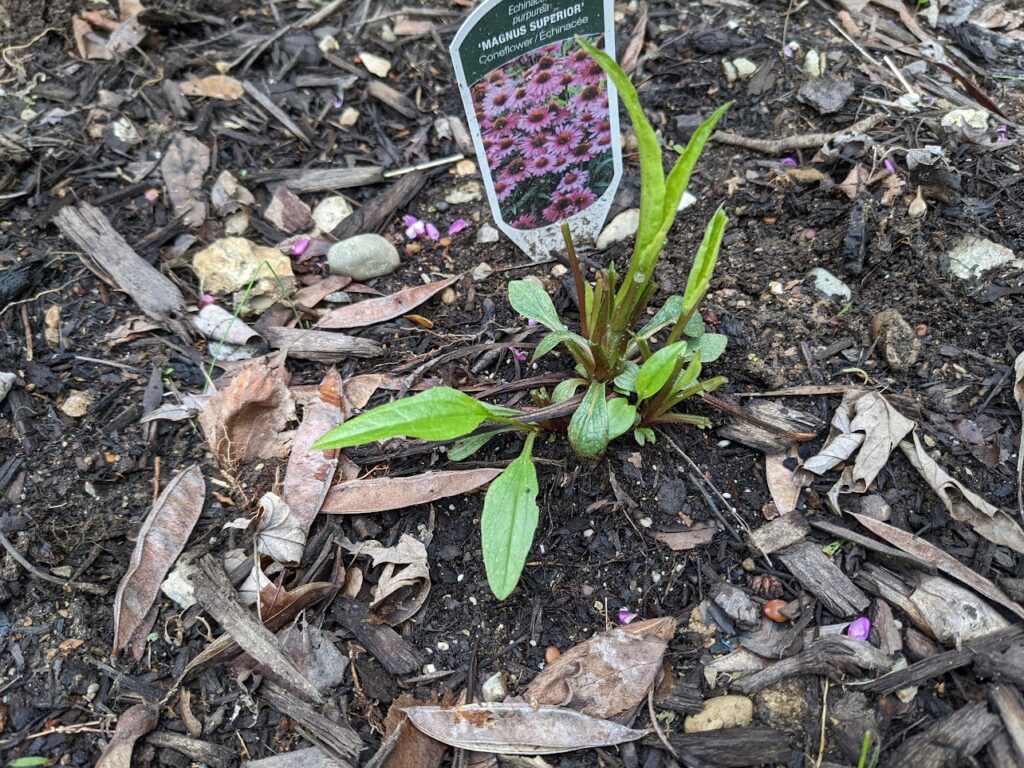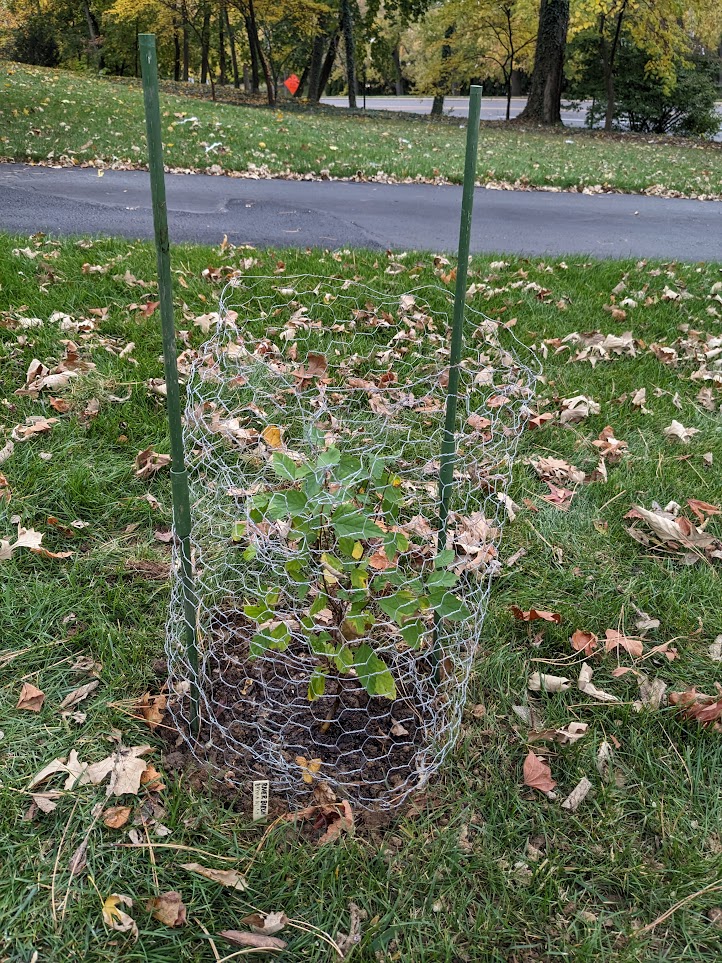There’s certainly no debate as to whether mammals both small and large can wreak havoc in a garden. Deer, rabbits, and even squirrels and chipmunks can eat tree saplings, tender young shoots and even entire perennial plants.
How to best stop them is a frequent topic of discussion in any gardening circle.
But taking a native plant gardening standpoint, we can add a new layer to the discussion: should you?
When we plant native, the goal is typically to support local ecosystems and provide a haven for native flora and fauna. And although the fauna that many are intentionally trying to attract are along the lines of beautiful butterflies, small and larger mammals are an important part of the ecosystem too.
So, how can you ethically deter rabbits, deer, squirrels, and chipmunks from doing too much damage to your plants without compromising the harmony you aim to achieve with your native garden? There are some methods that strike a balance.
But first, a crucial point to consider is the age of your plants.
Protecting Young vs. Established Plants from Rabbits and Deer (and Squirrels, Chipmunks, etc.)

Young seedlings and recently planted specimens are more vulnerable to the persistent nibbling of critters. These delicate plants may struggle to recover from the damage, making protection a higher priority during their early stages.
Established native plants, on the other hand, are usually resilient enough so they can bounce back easily from even some significant munching. Before deciding on a course of action, assess the age and health of your plants to determine the level of protection required.
Ethical Deterrence Methods for Small Mammals
- Natural Barriers: You can create physical barriers using materials such as mesh, burlap, or chicken wire. Some fence an entire garden with barriers tall enough to deter deer but not so imposing that they disrupt the free movement of smaller critters. Or you can use smaller chicken wire cages placed on individual plants that you want to protect.
- Scent Deterrents and Repellants: Many animals rely heavily on their sense of smell. Using natural scents like lavender, garlic, or predator urine around your garden to discourage critters without harming them. Capsaicin, or chili pepper extract, is another one that can have positive results. A variety of repellant products are also available for garden use such as bone meal. Liquid Fence is another favorite among many native plant gardeners who often report it is effective in deterring rabbits and deer (although it does have a very foul scent). With many of these, you’ll need to reapply them periodically and after rain.
- Motion-Activated Devices: Another potential option is to look into motion-activated sprinklers or noise devices to startle and deter animals when they approach. These devices are effective and do not cause harm.
- Utilizing a Guard Dog: Some gardeners report that a dog can be helpful in deterring deer and other critters. Part of this is due to them leaving their scent near your plants, and their physical presence and barking can also help scare deer off. This solution may not be a good option for everyone, though, and it also requires you to keep a close eye on the dog to make sure it doesn’t eat the plants or cause other damage.
A method of a slightly different type is diversification. Planting a variety of species can help lessen the impact of critter damage. By offering a diverse range of plants, you may attract wildlife to other plants. If some are eaten, others will likely survive and thrive.
Sometimes, the best strategy is to accept a certain level of wildlife interaction. Whether you should or shouldn’t deter wildlife from your native plant garden is a personal decision that depends on your gardening goals and also your setting. Protecting a multi-acre landscape is a much different proposition from a small suburban yard. In many cases, a balance can be struck where both plants and wildlife benefit.
Understanding the Range of Animal Behavior, Especially Deer
When deciding what, if any, action to take, it’s also important to understand the behavior of the animals you are encountering. Deer, for example, are known for their voracious appetite for a wide range of plants. Rabbits, while smaller, can quickly nibble through young shoots. Squirrels and chipmunks, though often less destructive, can dig up bulbs and disrupt young plants.
Deer are a special consideration because they are significantly overpopulated in many areas of the United States due to the major declines of their natural predators like wolves. This overpopulation leads to overconsumption of all the native vegetation they can find, which is also a major contributor to the spread of invasive plants. Therefore, letting them run rampant through your plants is not actually “natural” in terms of supporting a balanced ecosystem. It’s very unlikely you can introduce their predators or hunt in your yard, so deciding to take more action to protect your plants can be a good idea.

Do Deer Still Eat Deer Resistant Plants?
Many plants are marketed as “deer resistant” but that often is not true in practice; their tastes can vary widely and if they are hungry enough, they will eat almost anything. Even if they don’t like the taste of a particular plant, they will often still chew off whole shoots or branches.
The Takeaway: My Advice on Deterring Rabbits and Deer from a Native Plant Garden
Taking all of the above into account, I believe that the best approach is a combination: on one hand, it’s most beneficial to adjust your gardening philosophy somewhat so as not to worry unnecessarily about plant damage when most natives are so hardy they can easily bounce back. (And part of that is rethinking whether browsing is even “damage” at all or a natural part of the cycle.)
However, there should be notable exceptions: new plants you have just transplanted or seedlings in their first year, new trees and shrubs, and any favorite species that you want to thrive as a garden focal point.
Caging individual plants with chicken wire is often the best option as opposed to fencing off an entire garden, and that can be combined with periodic Liquid Fence applications (usually about one per month). Young trees can be given trunk guards to protect from deer antler rub.
If you garden in an area where deer specifically are prevalent, I recommend more intense protection methods because their eating is more than would be expected in a balanced ecosystem.
If you’re experiencing rabbit, deer, squirrel, chipmunk, or other animal damage to your plants, let us know what you’re trying in the comments below.
Leave a Reply